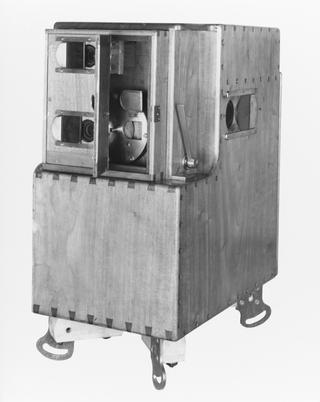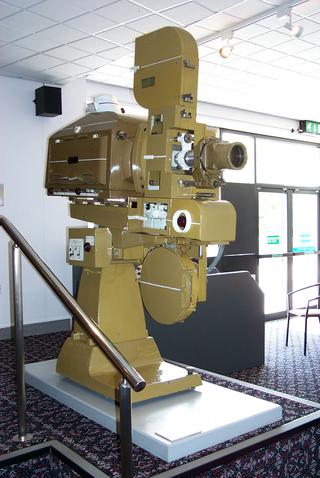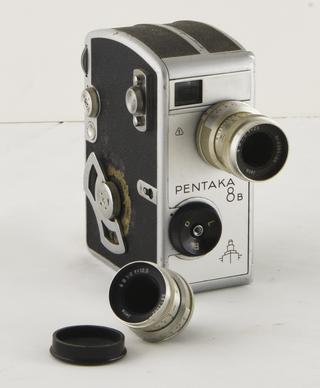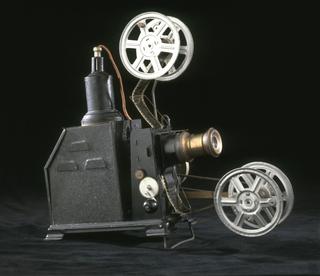
Lamp holder for Urban-Joy 'Spirograph'
Lamp holder for Urban-Joy 'Spirograph', 16mm home projector by H.W.Joy, 1920
The Spirograph projector was originally designed in England in 1913 by Theodore Brown (1870-1938), who sold the rights to Charles Urban (1867-1942).
Urban’s engineer Henry Joy (b. 1872) developed the Spirograph from 1920, and some were produced in 1923 shortly before the collapse of Urban’s business. It used 10½ inch diameter discs containing 1200 frames arranged in a spiral of twelve rows. When the handle was turned, the disc revolved and gradually tracked across behind the lens. The discs were reproductions of professional feature films and the projector was intended for home use.
The Spirograph used 10½ inch diameter discs containing 1200 frames arranged in a spiral of twelve rows. When the handle was turned, the disc revolved and gradually tracked across behind the lens. The discs were reproductions of professional feature films and the projector was intended solely for home use. There was no camera available so people could not make their own films.
Details
- Category:
- Cinematography
- Object Number:
- 1937-786/2
- Materials:
- white metal (unknown)
- Measurements:
-
whole: .35 kg
- type:
- lamp holder
- credit:
- The National Media Museum, Bradford




